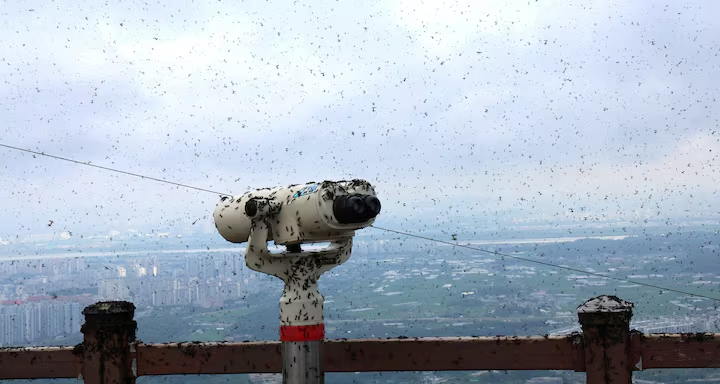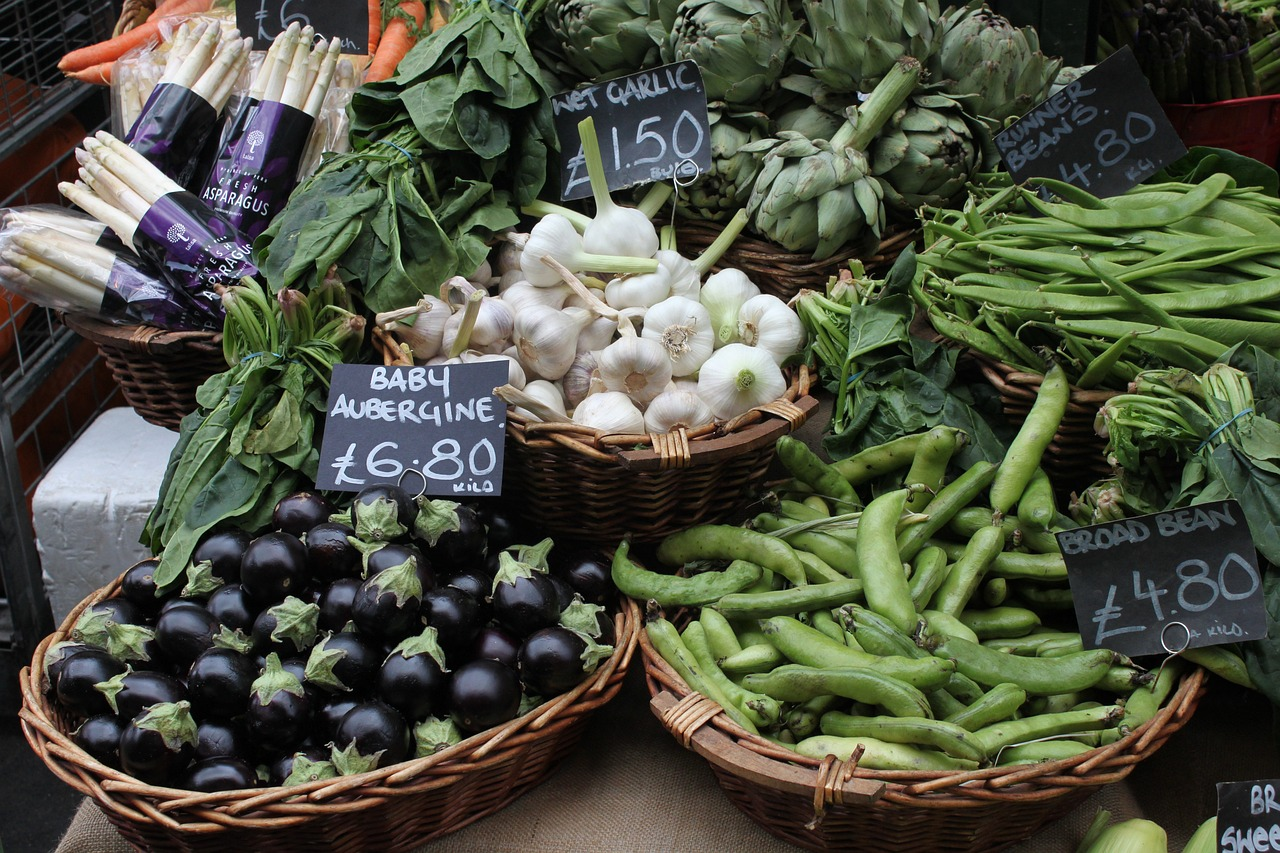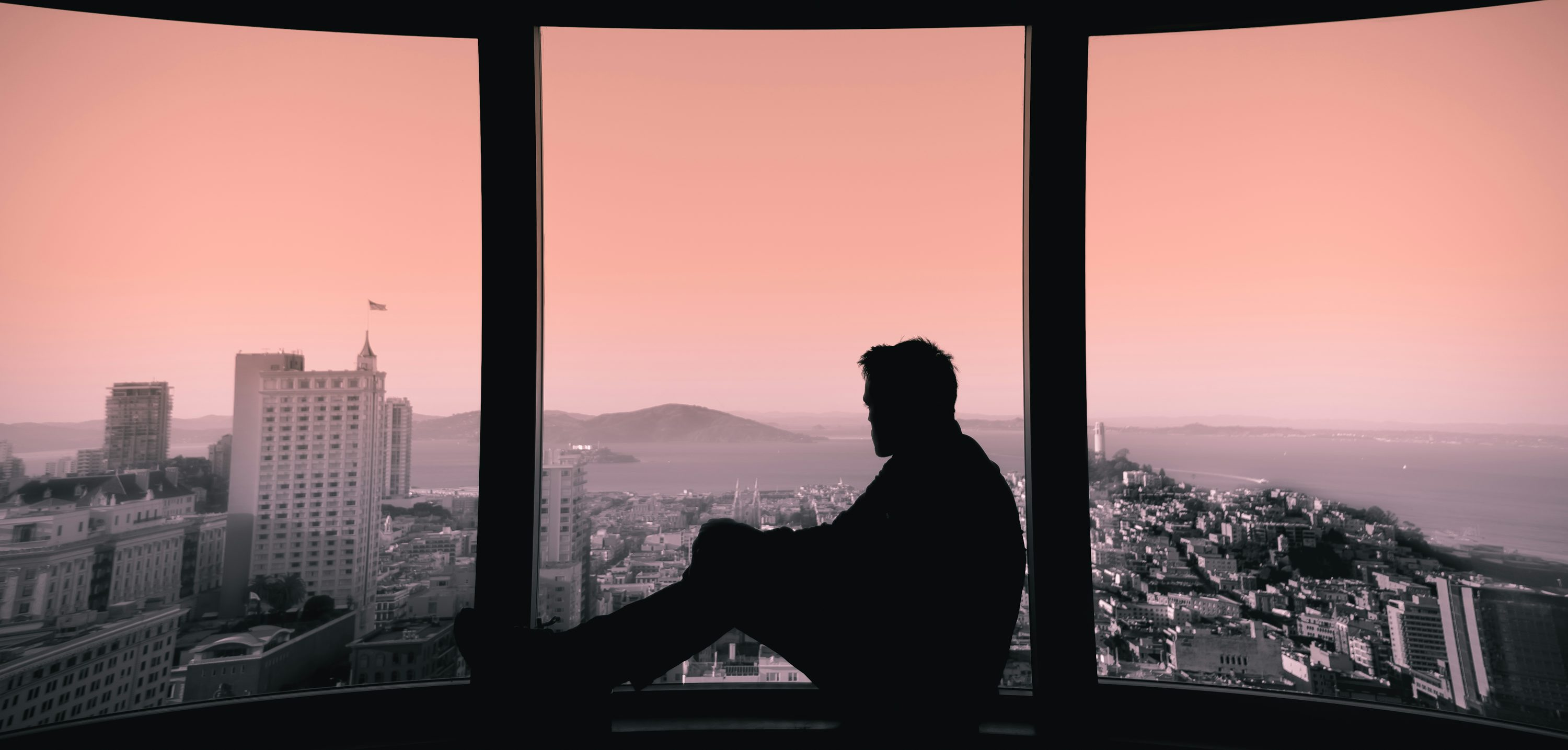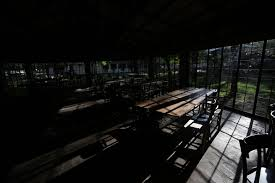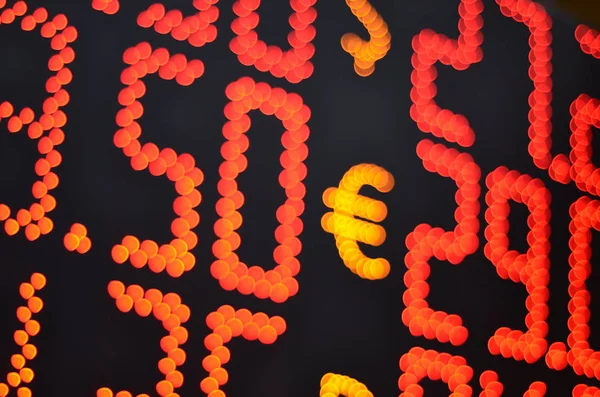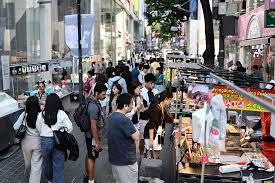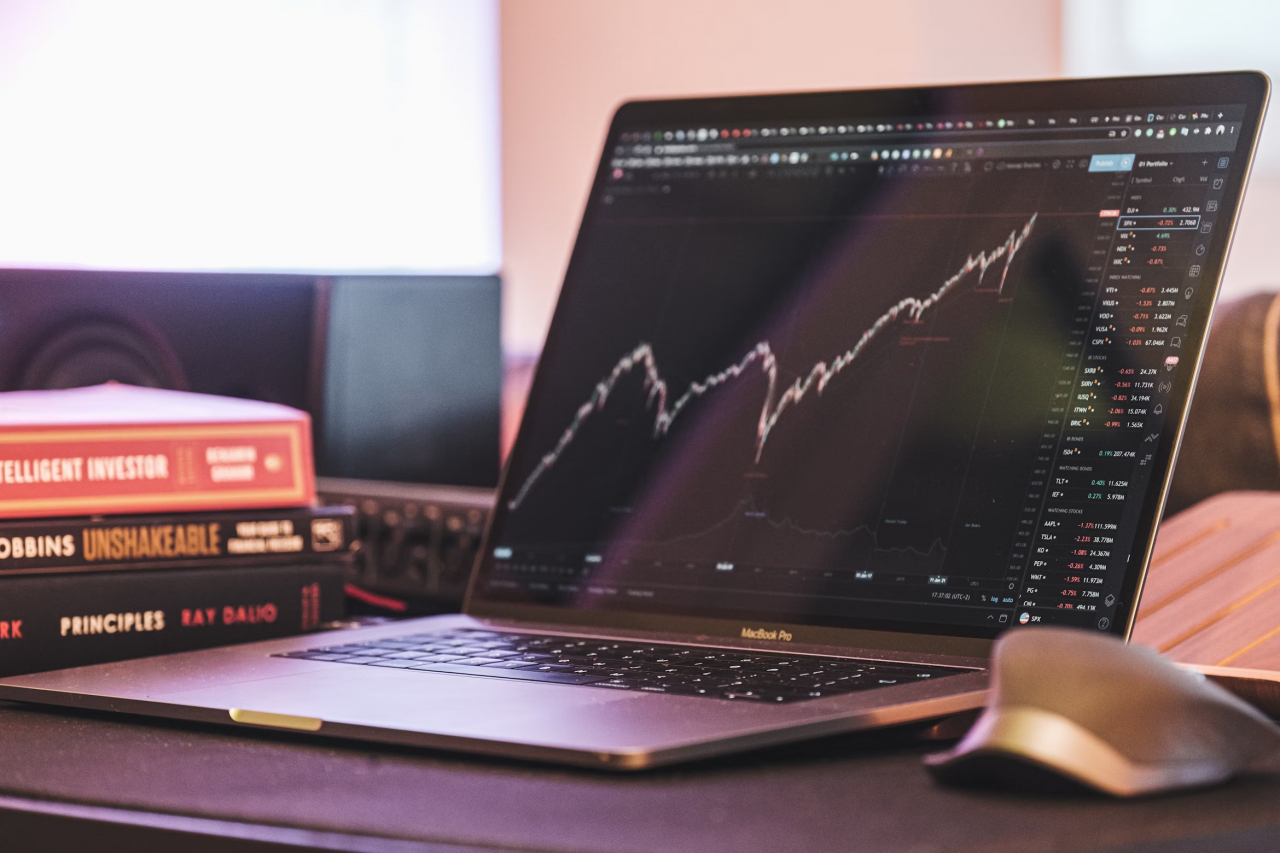| 최초 작성일 : 2025-09-12 | 수정일 : 2025-09-12 | 조회수 : 26 |
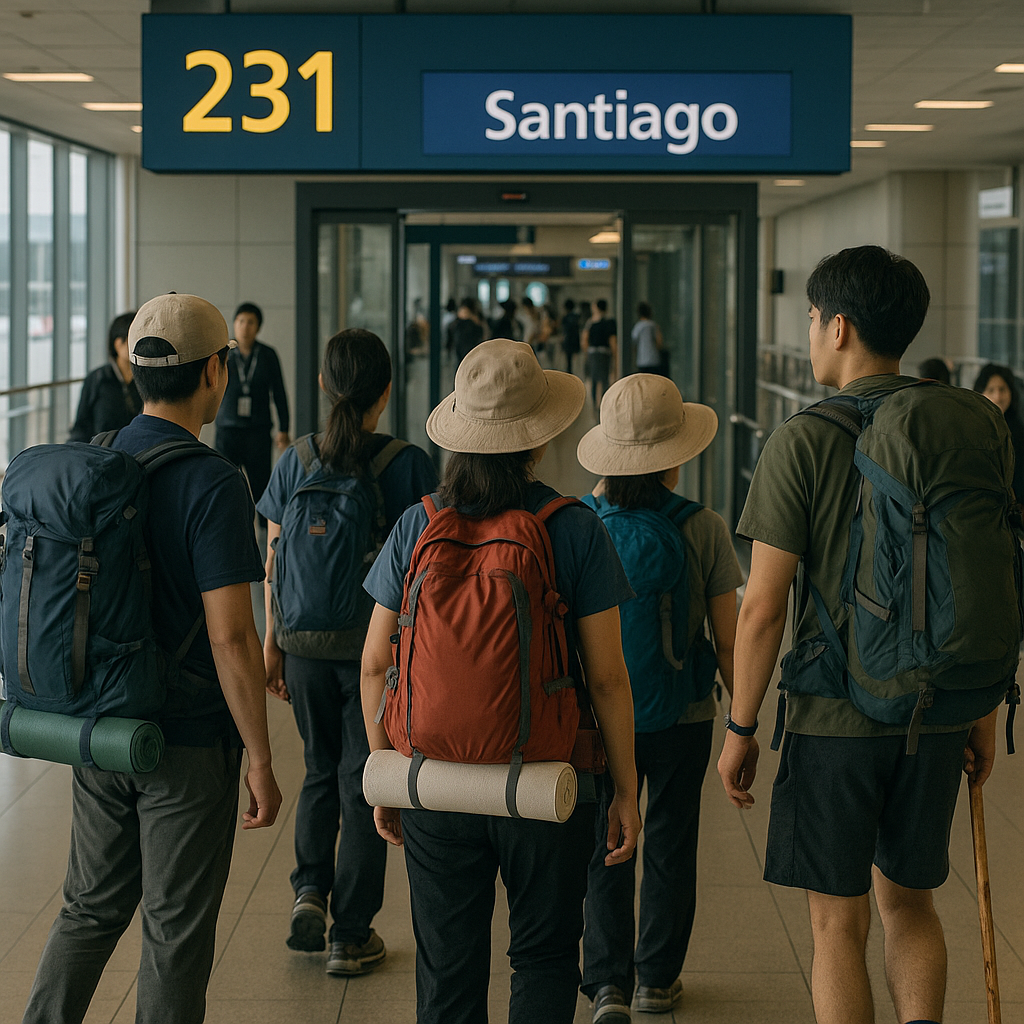
“The Rise of Korean Pilgrims on the Camino de Santiago” — Walking to Presence, 2024.03. “Camino de Santiago Statistics & Trends Over Time” — LotusEaters Travel, 2024.05. “Where do the pilgrims who make the Camino come from?” — ViveCamino website, recent survey. “The Camino Helped Me Be Brave,” Says Yoon — Testimony published via Galicia Regional Government, Korean pilgrim story. “El albergue de Logroño registers a 20% fewer pilgrims, but 85% of visitors are foreign — Portugal, Korea, France, Germany among nationalities” — Radio Rioja / Cadena SER, July 2025. ‐-------------- In recent years, a surprising trend has caught global attention: South Korea consistently ranks among the top four countries sending pilgrims to the Camino de Santiago in Spain, following Spain itself, Germany, and France. According to the Pilgrim’s Reception Office in Santiago de Compostela, more than 20,000 Koreans arrive annually—remarkable given the geographical distance, cost, and time commitment involved. Major Korean media such as JoongAng Ilbo, Chosun Ilbo, and KBS frequently cover this “Camino boom,” while Spanish newspapers including El País and La Voz de Galicia highlight the Korean presence as a cultural phenomenon. Travel agencies in Seoul now offer dedicated Camino packages, and bookstores display shelves of Camino memoirs written by Korean authors. Why, among all nations outside Europe, do Koreans feel such a strong pull to this centuries-old pilgrimage route? The reasons cannot be reduced to simple tourism or curiosity. They reflect deeper layers of identity, social pressure, generational anxiety, and spiritual longing. This article interprets the trend through theoretical perspectives, news analysis, and international comparison.
Several key theories provide lenses to understand why the Camino resonates with Koreans: Max Weber’s sociology of religion emphasizes the link between spiritual practices and social order. The Camino serves as a modern pilgrimage where secular Koreans seek meaning outside institutional religion. Victor Turner’s rite of passage theory frames pilgrimage as a liminal experience—between separation, transition, and reintegration. For many Koreans, especially young professionals, walking the Camino functions as a symbolic break from hyper-competitive society. Émile Durkheim’s collective consciousness highlights the power of shared rituals. On the Camino, Koreans experience community not through nationality but through the global fellowship of walkers. Ulrich Beck’s risk society reminds us that modern Koreans live under constant uncertainty—job insecurity, real estate pressures, climate change. The Camino becomes a coping mechanism for manufactured anxieties. Erich Fromm’s “To Have or To Be” provides a critique of materialism. Many Koreans join the Camino to move from “having” (status, possessions) to “being” (self-realization, inner peace). Pierre Bourdieu’s cultural capital explains how the Camino, once a niche European journey, now functions as a form of symbolic capital in Korea. To say “I walked the Camino” signals cultural sophistication and resilience. Joseph Campbell’s hero’s journey resonates as well: ordinary Koreans leave home, face challenges on the road, and return transformed—a narrative deeply appealing to a society craving stories of renewal. These theories remind us that the Camino’s Korean popularity is not accidental but embedded in larger cultural and structural contexts.
Korean media reports reveal a mosaic of motivations: 1. Work and stress relief. Korea’s reputation as a work-intensive society pushes many to seek drastic breaks. A Yonhap News survey found that office workers consider the Camino a “reset button.” 2. Spiritual but not religious. Christianity remains strong in Korea, but many pilgrims describe themselves as “spiritual seekers.” Local press stories highlight Koreans lighting candles in cathedrals, not as doctrine but as personal reflection. 3. Generational divides. For retirees, the Camino is a post-career reward. For young adults, it is a chance to delay or rethink life choices. Hankyoreh reported on 20-somethings walking to ask, “Is this life really mine?” 4. Hallyu and cultural spillover. Bestselling Korean books and TV documentaries about the Camino have amplified interest. The “Camino boom” mirrors the cultural cycle that once elevated Everest trekking or the Trans-Siberian railway. 5. Infrastructure of access. Airlines, Spanish hostels (albergues), and Korean-language guidebooks make the journey increasingly accessible. Maeil Business Newspaper notes the surge of Korean signage along the French Route. 6. Global comparison. While Japan and China have famous domestic pilgrimages (Kumano Kodo, Mount Emei), only Koreans travel in such high numbers to Spain, showing a unique blend of global mobility and local dissatisfaction. International media often express surprise: why would a small East Asian nation send more pilgrims than Italy or Portugal? The answer lies in Korea’s mix of high mobility, intense social stress, and cultural appetite for symbolic journeys.
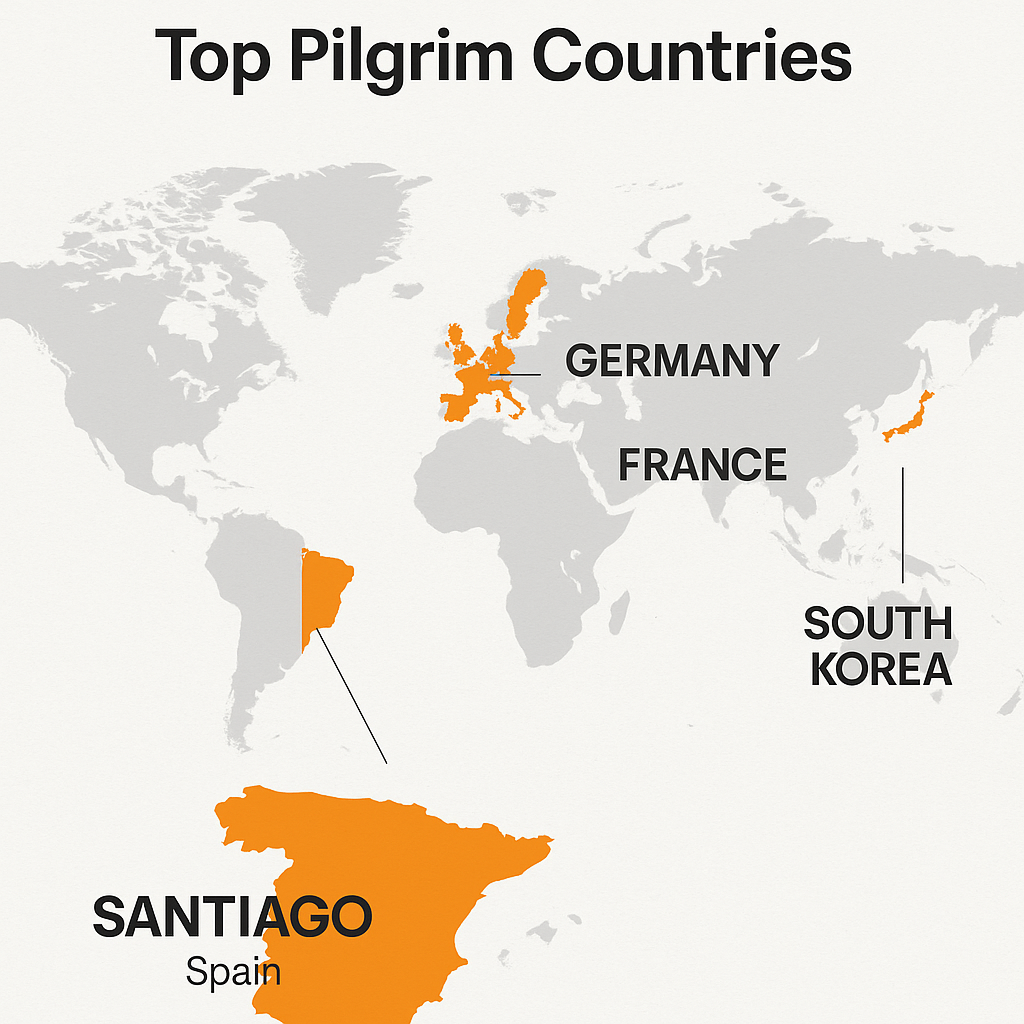
1. For Korean society. The Camino reflects accumulated pressures: educational competition, corporate hierarchy, real estate struggles. Recognizing these as drivers of spiritual exodus could spark broader debates on work-life balance. 2. For policy makers. Instead of treating pilgrimages as mere tourism, Korea could support sabbatical programs, mental health leave, or domestic long-distance trails to channel similar benefits locally. 3. For the global Camino network. The strong Korean presence enriches cultural exchange but also challenges infrastructure capacity. Spanish municipalities already adapt menus, signage, and services for Korean walkers. 4. For individuals. The Camino shows that identity is not fixed by success metrics at home. It invites Koreans to imagine life stories beyond rankings and salaries.
The Camino de Santiago has become, for thousands of Koreans, more than a path across Spain. It is a mirror reflecting the anxieties and hopes of a nation: the hunger for meaning, the fatigue of relentless competition, the desire for community in an age of loneliness. Each Korean step on the cobblestones adds to a collective narrative: that modern life, however intense, can still allow room for walking, reflection, and transformation. As Spain welcomes its ever-growing number of Korean pilgrims, the question circles back home: will Korea create spaces of reflection within its own borders, or will the long road to Santiago remain the symbol of what is missing in everyday Korean life?


